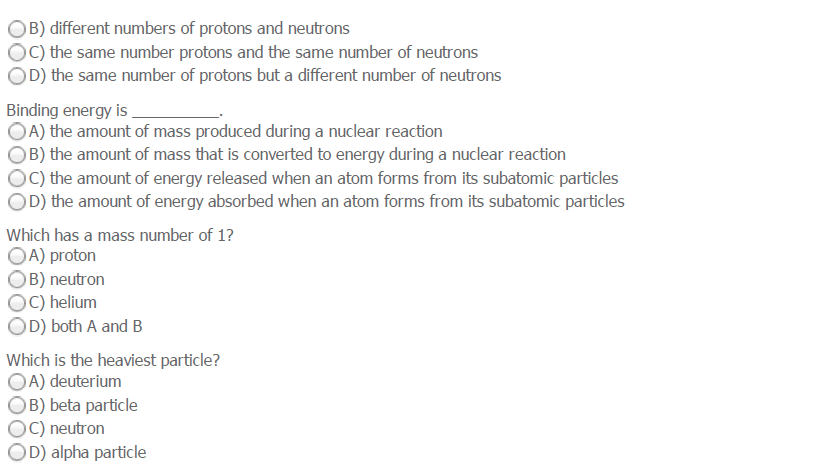CHEM 001C Lecture Notes - Nuclear Chemistry, Unified Atomic Mass Unit, Nuclear Reaction

CHEM 001C Lecture 19: Nuclear Chemistry
●Nuclear Binding Energy
○The mass of a helium-4 nucleus is 4.0015 amu
■The mass of β neutrons + β protons is 4.0γβ0 amu
○E = mcβ
■If the protons and neutrons in the helium-4 nucleus are separated, energy
would need to be absorbed
■When the helium-4 nucleus forms, 0.0γ05 amu is lost as energy released
■Nuclear binding energy: mass reduction upon forming helium-4; mass
converted to energy (E = mcβ)
○Note: binding energy is maximized at mass number = 60 amu
■Smaller
nuclei → energy released
when nuclei are formed
(fusion)
■Larger
nuclei (mass # > 60) → energy released
when nuclei decay
(fission)
●Nuclear power plants involve fission
●Isotopes/ Atomic Numbers
○Nuclear chemistry is based on the properties of nuclei with different sizes (atomic
number) and forms of elements with different numbers of neutrons (isotopes)
■Nuclear chemistry: the study of the properties and changes of atomic
nuclei
■Nuclear reaction: a reaction that changes the atomic nucleus
●βγ8
9βU → 4
βHe + βγ4
90Th
○Nucleons: protons + neutrons
●Radioactivity
○Radioactivity: the spontaneous decay and emission of radiation from an unstable
nucleus
■radiation is strongly deflected toward the (+) electrode
■radiation is undeflected
find more resources at oneclass.com
find more resources at oneclass.com
Document Summary
The mass of a helium-4 nucleus is 4. 0015 amu. The mass of neutrons + protons is 4. 0 0 amu. If the protons and neutrons in the helium-4 nucleus are separated, energy would need to be absorbed. When the helium-4 nucleus forms, 0. 0 05 amu is lost as energy released. Nuclear binding energy : mass reduction upon forming helium-4; mass converted to energy (e = mc ) Note : binding energy is maximized at mass number = 60 amu. Smaller nuclei energy released when nuclei are formed ( fusion ) Larger nuclei (mass # > 60) energy released when nuclei decay ( fission ) Nuclear chemistry is based on the properties of nuclei with different sizes (atomic number) and forms of elements with different numbers of neutrons (isotopes) Nuclear chemistry : the study of the properties and changes of atomic nuclei. Nuclear reaction : a reaction that changes the atomic nucleus.



